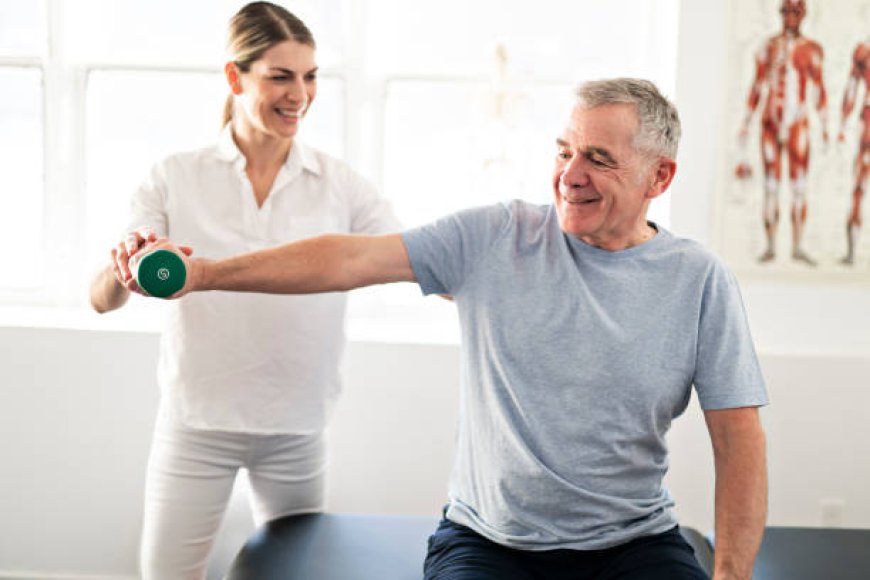Effective Exercise for Shoulder Pain and the Role of Shoulder Pain Physical Therapy

Shoulder pain can be a debilitating condition that affects your everyday activities, whether you're reaching for something on a high shelf or simply trying to lift your arm. Fortunately, exercise for shoulder pain and shoulder pain physical therapy offer effective solutions to alleviate discomfort, strengthen the muscles around the shoulder joint, and improve overall mobility.
Understanding Shoulder Pain and the Need for Shoulder Pain Physical Therapy
Shoulder pain can stem from various causes, including rotator cuff injuries, tendonitis, bursitis, and frozen shoulder. These conditions lead to inflammation, stiffness, and pain in the shoulder, limiting your ability to move freely. Whether you're recovering from an injury or managing chronic pain, physical therapy plays a crucial role in the healing process.
Shoulder pain physical therapy focuses on targeted exercises and techniques designed to reduce pain, restore function, and prevent future injuries. It is essential for individuals who have experienced shoulder trauma, surgery, or those with chronic discomfort.
The Benefits of Exercise for Shoulder Pain
The primary goal of exercise for shoulder pain is to reduce pain and inflammation while strengthening the muscles around the shoulder joint. These exercises help improve the range of motion, increase flexibility, and enhance the stability of the shoulder. When performed correctly and consistently, these exercises can offer significant relief from shoulder pain.
Here are some benefits of incorporating exercise for shoulder pain:
-
Pain Reduction: Gentle exercises target the muscles and tendons around the shoulder joint, which helps reduce inflammation and discomfort over time.
-
Improved Flexibility: Stretching exercises allow for better range of motion, helping to alleviate stiffness and making daily activities easier to perform.
-
Strengthening the Shoulder: Strengthening the rotator cuff and scapular muscles helps improve stability and prevent further injuries.
Effective Exercise for Shoulder Pain You Can Do at Home
If you're experiencing shoulder pain, here are some simple and effective exercises to help alleviate discomfort:
1. Pendulum Swings
This exercise is excellent for gently stretching and mobilizing the shoulder joint.
How to do it:
-
Stand and lean forward slightly, allowing your arm to hang down.
-
Swing your arm in a small circle, first clockwise and then counterclockwise.
-
Perform this for about 30 seconds each direction.
Pendulum swings help relieve stiffness and improve mobility in the shoulder.
2. Doorway Stretch
This stretch focuses on improving flexibility and relieving tightness in the shoulder.
How to do it:
-
Stand in a doorway with your arms placed on the door frame at shoulder height.
-
Gently lean forward until you feel a mild stretch in your shoulders and chest.
-
Hold for 15 to 30 seconds, and repeat 2-3 times.
This stretch helps open up the chest and stretch the shoulder muscles, reducing pain and tightness.
3. Rotator Cuff Strengthening
Strengthening the rotator cuff muscles is essential for shoulder pain relief.
How to do it:
-
Use a resistance band or light dumbbells.
-
Stand with your elbows bent at 90 degrees and rotate your forearm outward while keeping your upper arm close to your body.
-
Perform 2-3 sets of 10-15 repetitions.
This exercise strengthens the muscles that stabilize the shoulder joint, helping to prevent injury and improve shoulder stability.
4. Shoulder Blade Squeeze
This exercise targets the muscles between your shoulder blades to improve posture and shoulder stability.
How to do it:
-
Sit or stand up straight.
-
Pull your shoulder blades back and down, squeezing them together.
-
Hold for 5 seconds, then release.
-
Perform 10-15 repetitions.
This exercise helps improve posture and strengthens the muscles that support the shoulder joint, contributing to overall shoulder health.
The Role of Shoulder Pain Physical Therapy in Your Recovery
While exercises at home can be incredibly helpful, shoulder pain physical therapy offers a more personalized approach. A licensed physical therapist can assess your specific condition and design a treatment plan tailored to your needs. They will guide you through safe and effective exercises, monitor your progress, and adjust your program as needed to ensure optimal recovery.
Some additional techniques used in shoulder pain physical therapy include:
-
Manual Therapy: Hands-on techniques to improve mobility and relieve pain by manipulating the muscles and joints.
-
Heat or Cold Therapy: Applying heat or ice to the affected area can reduce pain and inflammation.
-
Posture Training: Proper posture can relieve stress on the shoulder joint and prevent future issues. A physical therapist can teach you exercises to improve posture and body mechanics.
-
Strengthening Exercises: A therapist will prescribe specific strengthening exercises to target the muscles around the shoulder and promote healing.
When to Seek Shoulder Pain Physical Therapy
If you've been dealing with shoulder pain for more than a few weeks, or if the pain is affecting your quality of life, it may be time to consider shoulder pain physical therapy. A physical therapist can help you understand the underlying cause of your pain and develop a customized treatment plan to address it.
Whether you're recovering from an injury, surgery, or simply managing chronic discomfort, shoulder pain physical therapy can be the key to restoring your mobility and function.
Conclusion
Incorporating exercise for shoulder pain and seeking shoulder pain physical therapy are essential steps toward recovering from shoulder pain and preventing future injuries. The right exercises can reduce pain, improve flexibility, and strengthen the muscles around the shoulder joint, providing relief and helping you regain your range of motion. With the guidance of a skilled physical therapist, you can develop a personalized plan to address your specific needs and ensure optimal healing. For more information on how shoulder pain physical therapy can help, visit pptandfitness.com. By committing to a regular exercise routine and physical therapy, you can take significant strides toward a pain-free and more active life.

 ryanwebster
ryanwebster